A 'type' is one particular specimen (or a group of specimens) of an organism to which the scientific name of that organism is formally attached. Match colum I (type) with colum II (description) and select the correct option from the codes given below.
Colum IColumn IIA.Holotype(i)A specimen cited with original description other than the holotype or isotypeB.Isotype(ii)A duplicate of the holotypeC.Paratype(iii)A specimen designated in the original designated in the original descriptionD.Lectotype(iv)A specimen selected from original material to serve as nomenclatural type when the holotype was not designated
A-(iii), B-(ii), C-(i), D-(iv)
A-(iii), B-(i), C-(ii), D-(iv)
A-(iii), B-(ii), C-(iv), D-(i)
A-(iii), B-(iv), C-(iv), D-(ii)
The correct Answer is:A
To solve the question, we need to match the types of specimens (Column I) with their corresponding descriptions (Column II). Let's go through each type and its description step by step.
1. Holotype (A):
- Definition: A holotype is a single specimen that is designated as the type of a species by the original author at the time the species name and description were published.
- Matching Description: This corresponds to (iii) "A specimen designated in the original description."
2. Isotype (B):
- Definition: An isotype is a duplicate of the holotype of a species.
- Matching Description: This corresponds to (ii) "A duplicate of the holotype."
3. Paratype (C):
- Definition: A paratype is a specimen that is not formally designated as a type but is cited along with the type collection in the original description of the taxon.
- Matching Description: This corresponds to (i) "A specimen cited with the original description other than the holotype or isotype."
4. Lectotype (D):
- Definition: A lectotype is a specimen selected from the original material to serve as the nomenclatural type when the holotype was not designated.
- Matching Description: This corresponds to (iv) "A specimen selected from original material to serve as nomenclatural type when the holotype was not designated."
Final Matching:
- A (Holotype) → (iii) "A specimen designated in the original description."
- B (Isotype) → (ii) "A duplicate of the holotype."
- C (Paratype) → (i) "A specimen cited with original description other than the holotype or isotype."
- D (Lectotype) → (iv) "A specimen selected from original material to serve as nomenclatural type when the holotype was not designated."
Conclusion:
The correct matching is:
- A → iii
- B → ii
- C → i
- D → iv
Thus, the correct option is 1st option: A → iii, B → ii, C → i, D → iv.
---
- Definition: A holotype is a single specimen that is designated as the type of a species by the original author at the time the species name and description were published.
- Matching Description: This corresponds to (iii) "A specimen designated in the original description."
- Definition: An isotype is a duplicate of the holotype of a species.
- Matching Description: This corresponds to (ii) "A duplicate of the holotype."
- Definition: A paratype is a specimen that is not formally designated as a type but is cited along with the type collection in the original description of the taxon.
- Matching Description: This corresponds to (i) "A specimen cited with the original description other than the holotype or isotype."
- Definition: A lectotype is a specimen selected from the original material to serve as the nomenclatural type when the holotype was not designated.
- Matching Description: This corresponds to (iv) "A specimen selected from original material to serve as nomenclatural type when the holotype was not designated."
- A (Holotype) → (iii) "A specimen designated in the original description."
- B (Isotype) → (ii) "A duplicate of the holotype."
- C (Paratype) → (i) "A specimen cited with original description other than the holotype or isotype."
- D (Lectotype) → (iv) "A specimen selected from original material to serve as nomenclatural type when the holotype was not designated."
The correct matching is:
- A → iii
- B → ii
- C → i
- D → iv
Topper's Solved these Questions
- THE LIVING WORLDBook:NCERT FINGERTPS ENGLISHChapter:THE LIVING WORLDExercise:NCERT
Explore 10 Videos
- THE LIVING WORLDBook:NCERT FINGERTPS ENGLISHChapter:THE LIVING WORLDExercise:Assertion & Reason
Explore 15 Videos
- THE LIVING WORLDBook:NCERT FINGERTPS ENGLISHChapter:THE LIVING WORLDExercise:MCQ
Explore 94 Videos
- TEST PAPERBook:NCERT FINGERTPS ENGLISHChapter:TEST PAPERExercise:Test Paper 3
Explore 50 Videos
- TRANSPORT IN PLANTSBook:NCERT FINGERTPS ENGLISHChapter:TRANSPORT IN PLANTSExercise:Transport In Plants
Explore 119 Videos
Similar Questions
Knowledge Check
Match column I with column II and select the correct option from the codes given below.
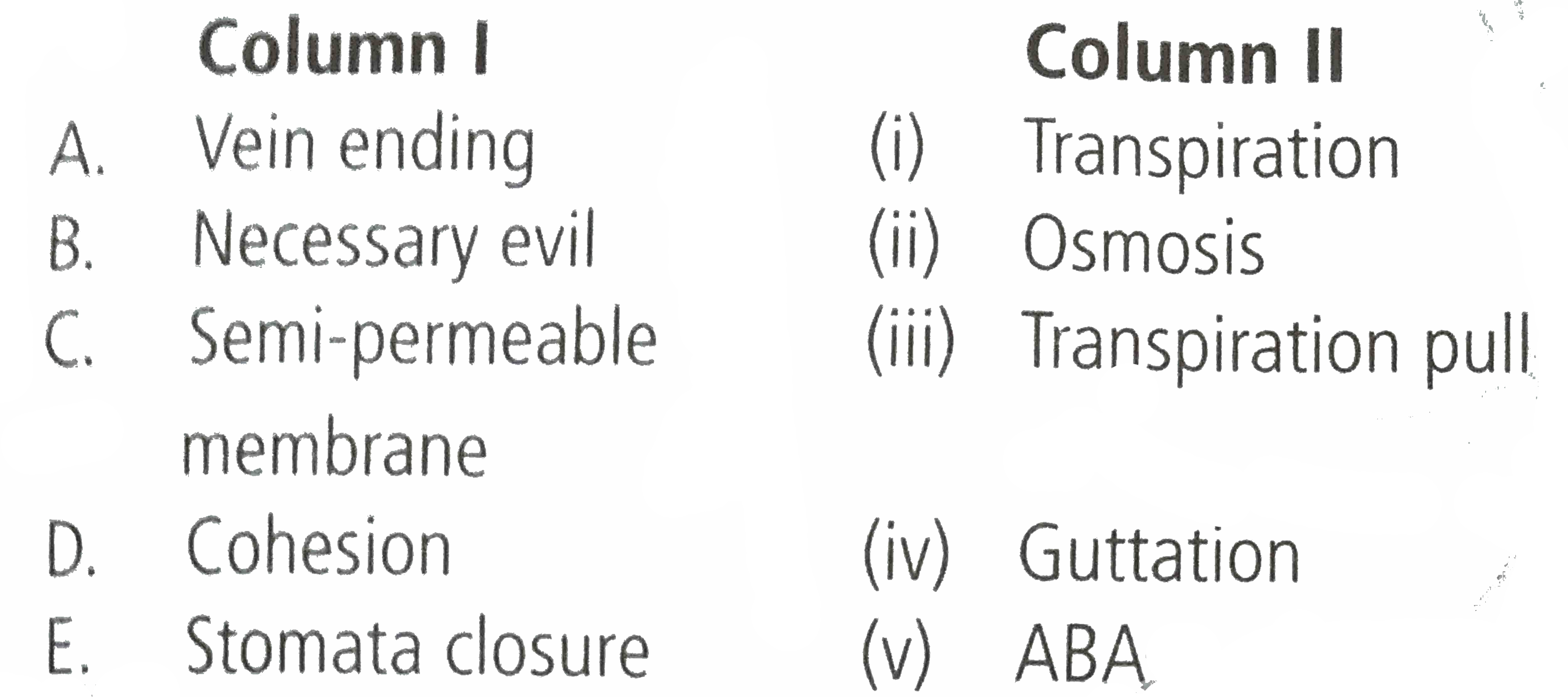 A(i)-D, (ii)-C, (iii)-A, (iv)-BB(i)-A, (ii)-B, (iii)-C, (iv)-DC(i)-D, (ii)-B, (iii)-A, (iv)-CD(i)-A, (ii)-C, (iii)-D, (iv)-B
A(i)-D, (ii)-C, (iii)-A, (iv)-BB(i)-A, (ii)-B, (iii)-C, (iv)-DC(i)-D, (ii)-B, (iii)-A, (iv)-CD(i)-A, (ii)-C, (iii)-D, (iv)-BMatch columnI with column II and select the correct option from the codes given below.
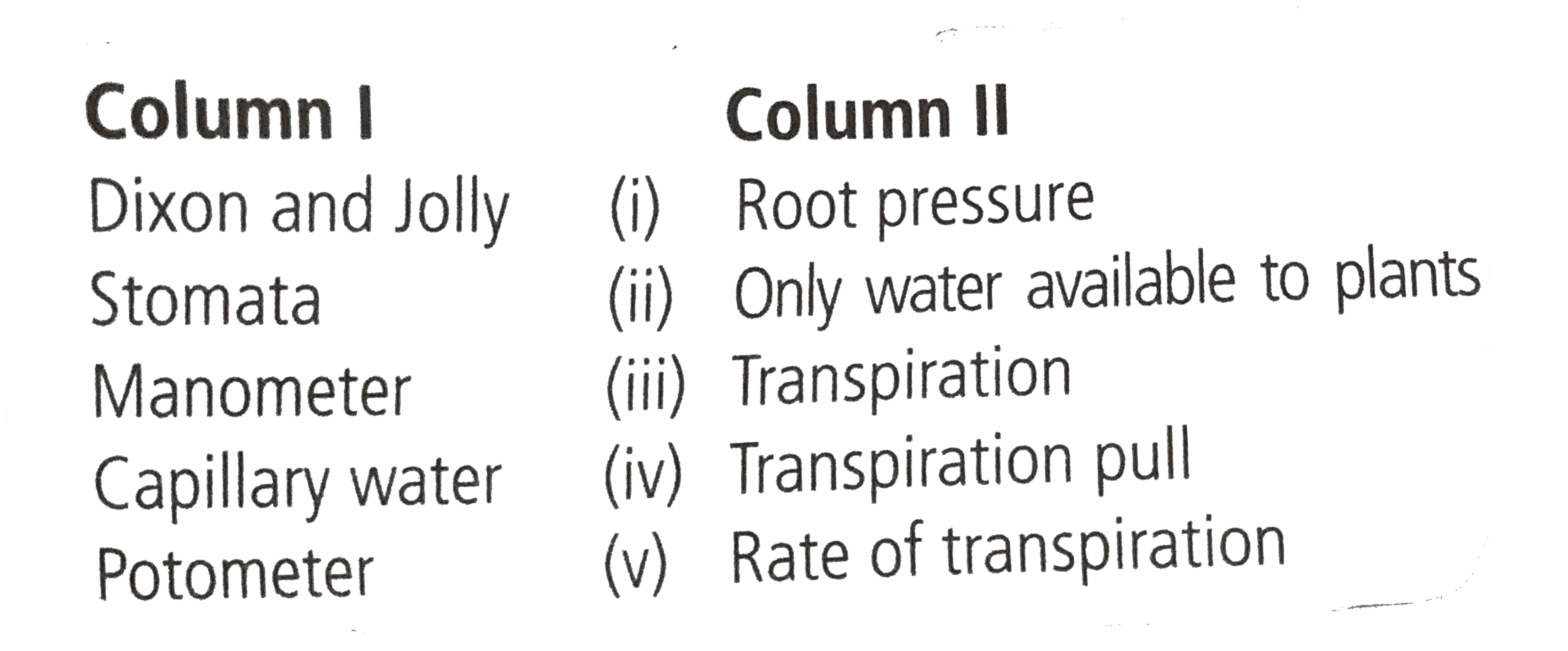 AA−(iv),B−(iii),C−(v),D−(ii),E−(i)BA−(i),B−(iii),C−(iv),D−(ii),E−(v)CA−(iv),B−(iii),C−(i),D−(ii),E−(v)DA−(v),B−(iv),C−(iii),D−(ii),E−(i)
AA−(iv),B−(iii),C−(v),D−(ii),E−(i)BA−(i),B−(iii),C−(iv),D−(ii),E−(v)CA−(iv),B−(iii),C−(i),D−(ii),E−(v)DA−(v),B−(iv),C−(iii),D−(ii),E−(i)Match column I with column II and select the correct option from the codes given below.
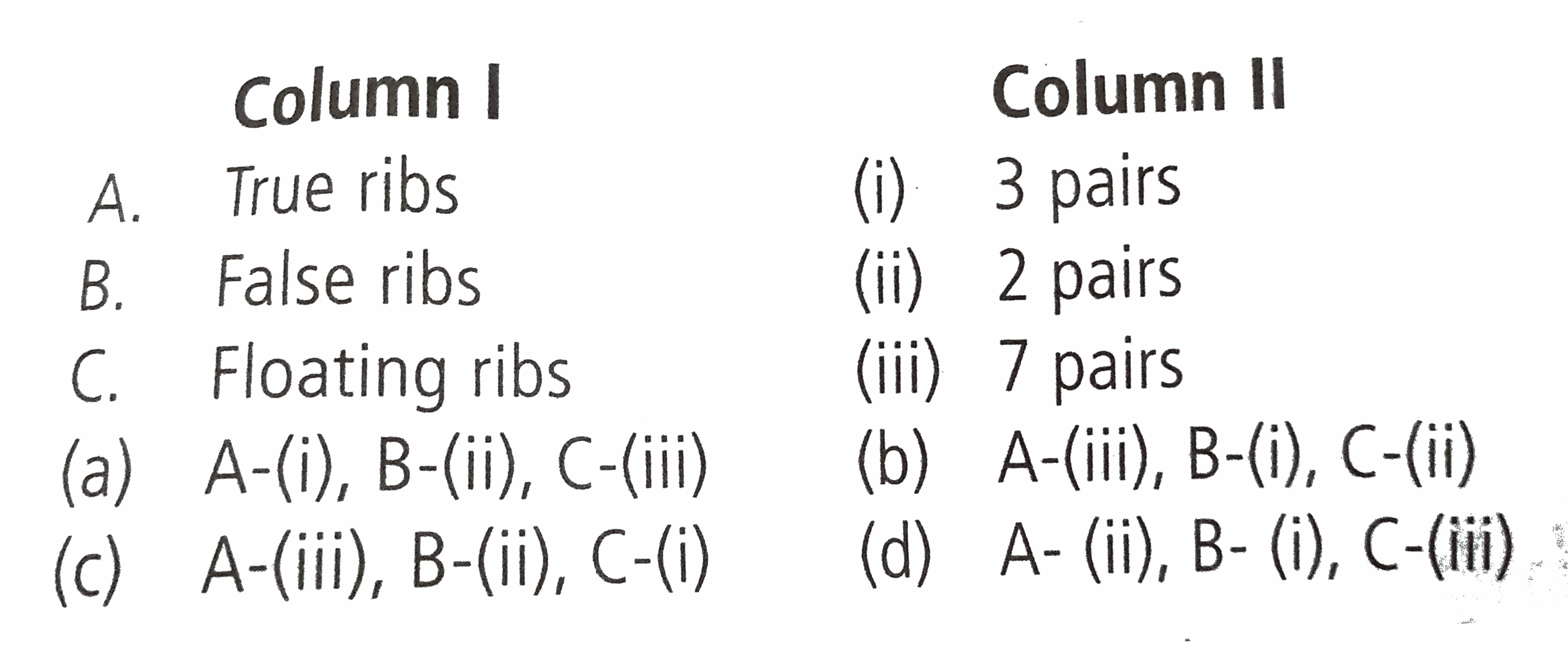 AA-(i), B-(ii), C-(iii)BA-(iii), B-(i), C-(ii)CA-(iii), B-(ii), C-(i)DA-(ii), B-(i), C-(iii)
AA-(i), B-(ii), C-(iii)BA-(iii), B-(i), C-(ii)CA-(iii), B-(ii), C-(i)DA-(ii), B-(i), C-(iii)
Match Column-I with Column-II and select the correct option from the codes given below.
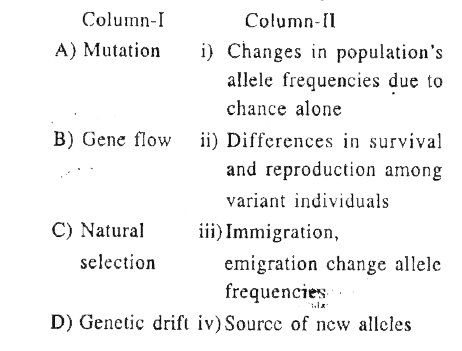
View SolutionMatch Column-I with Column-II and select the correct option from the codes given below.
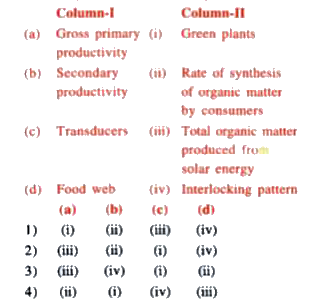
View SolutionMatch Column-I with Column-II and select the correct option from the codes given below.

View SolutionMatch column I with column II and select the correct option from the codes given below.

View SolutionMatch column I with column II and select the correct option from the codes given below.

View Solution


